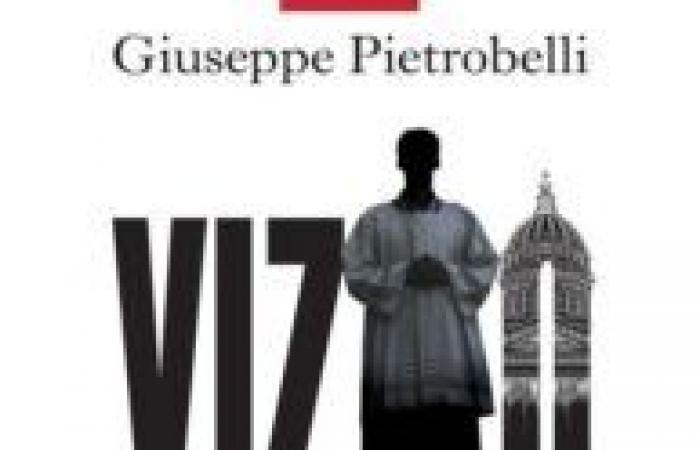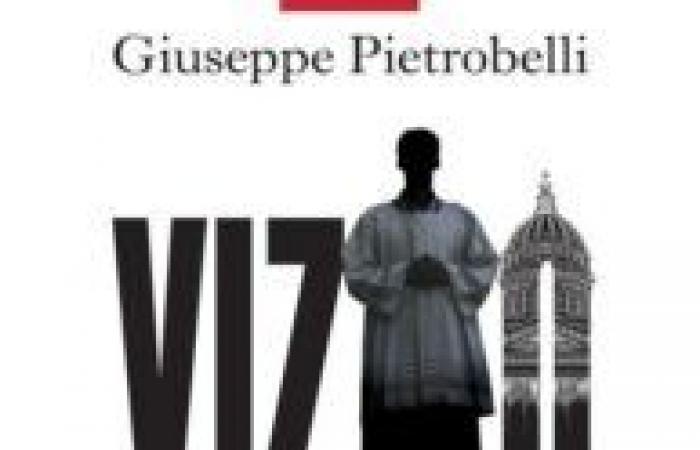The scandal of the “Pope’s altar boys”, reconstructed in the book “Vizio Capitale. Sex, power and silence in the Vatican”, written by Giuseppe Pietrobelli and published by Paper First, offers a disconcerting insight into the connivances that covered up a murky affair between teenagers that took place in the “St. Pius It is the scandal of those who knew and did nothing for years. The altar boy L. confided in the rector Don Renato Radice in 2009 and in 2013 with the bishop of Como, Diego Coletti, explaining to him that he suffered constant violence. He was threatened with expulsion and nothing happened. In 2014 an eyewitness, the Polish K, wrote to bishops and cardinals, even to the Pope. The canonical investigation was covered up until 2017 when the case was revealed by the broadcast “Le Iene”. Only then was the mechanism set in motion which led, after seven years, in January 2024 to the conviction on appeal (two years and 6 months of imprisonment) for corruption of a minor against Don Gabriele Martinelli, who was however acquitted with doubt by the accusation of sexual violence. “Vizio Capitale” has reconstructed with names and surnames – in a crucial chapter, which we publish here – the long chain of cardinals who knew and remained silent in the Vatican.
“I don’t even know how the Vatican handled these things… Now there are very specific rules for this matter given by Pope Francis, but ten years ago there weren’t any.” Monsignor Vittorio Lanzani, bishop of Labico, was dismissed a few days earlier from the Veneranda Fabbrica di San Pietro, of which he was delegate for twenty years, when on 26 March 2021 he testified before the Vatican Tribunal. The promoter of justice Roberto Zannotti she asks him: “Why in 2013, when first K. and then L. came to you, didn’t you suggest that the boys go to the Gendarmerie?”. Lanzani is taken by surprise: “… because it didn’t really cross my mind… and because being a very delicate matter… being an internal order of things in a seminary, the first had to be the cardinal, that’s what I had judged. I swear to you that the Gendarmerie did not come to mind.”
Almost as if to justify himself, he unloads on those above him, but admits the opacity of discretionary power. Only the reforms desired by Bergoglio in 2019 have been introduced the obligation to report in the face of reports of sexual abuse and a precise investigative path was drawn up. Faced with the news of a supposedly serious crime, anyone would think of turning to the police authorities, but this did not happen in the Vatican. Indeed, the “memory” of the bishop of Como, Diego Coletti, in January 2014, served to put a “tombstone” on the affair. Nothing more happened from the spring of 2013 until 15 December 2017, when the new bishop of the Como diocese, Oscar Cantoniwill formally launch a new Investigatio Praevia.
The fact is that almost everyone in the Vatican knew. It cannot be said that the issue remained closed within a limited circle. All government structures had been informed of this, in different ways and depending on their skills. The secrets of the Preseminar they were no longer such, but the reliability of the witnesses’ accounts should have been verified, entrusting the task to those who had the ability and independence to carry out a no-holds-barred investigation.
(…) Who was aware of the events of the Preseminar? In different times and ways at least seven cardinals and three bishops, in addition to Pope Francis, although it is not clear when the Pontiff was informed of this, given that there is no proof that all the letters to him were delivered addressed or sent to the cardinals. Certainly the decisions he has adopted from 2017 onwards demonstrate full awareness of the issue. But there is also a crowd of about fifteen priests and monsignors, as well as supporting actors. We are faced with one long communication chainwith many concentric circles.
We imagine the whispered words, the confessions in the ear, the curial rooms where one moves with a soft step, the triumph of allusion and silence. Let’s imagine priests and bishops calling for prudence, while doubt is repressed, except towards the victims, while gossip and suspicions spread. Imagine the monsignors who find out, apparently become indignant, and report it to higher authority. Higher and higher.
The first circle is that of the Preseminar, with the Pope’s altar boyswhich includes the rector Enrico Radice and the seminarian Gabriele Martinelli (the accused in the trial), as well as at least three other priests. There is also the spiritual father Don Marco Granoli (later deceased) and the bursar Don Ambrogio Marinoni and a religious teacher who wrote a first anonymous letter. Everyone knows at least part of the secret.
We enter the second level when Don Granoli receives the confidences of L. and the Polish boy K, in 2013. K. says he consulted with Don Carlos Encina Commentzsince 2006 Official of the Tribunal of the Apostolic Penitentiary, and with the Dominican father Vincenzo Nuara, collaborator of the Pontifical Commission “Ecclesia Dei”. Don Granoli, although respecting confessional secrecy, addressed the board of directors of theOpera Don Folci (on which the Preseminary depended), in Como, composed of the superior Don Angelo Magistrelliby the vice superior Don Gian Piero Franzi and the secretary Don Giampaolo Cozzi. Alarmed, he asks to stop Martinelli’s path to the priesthood.
Meanwhile Don Granoli sends K. to Bishop Lanzani. The conversation took place between the end of 2012 and the beginning of 2013. The bishop then personally received Don Granoli and Father Pierre Paul, who directs the choir of the Cappella Giulia, who listened to L.’s tormented story. Even the former minister he finally turns to Lanzani, who therefore has four different sources, two boys and two priests. “I was shocked and I did nothing but suggest to K. that he go and report everything to Cardinal Comastri” he will say seven years later. He did the same with L.
The case of the Preseminary thus experiences another leap upwards – the third circle – because the cardinal is the Pope’s vicar general for the Vatican City. Comastri is powerful, all he needs to do is pick up the phone and he can talk to anyone within the Leonine Walls. We are in 2013. He summons the rector Don Radice, “ordering him to pay close attention in the management of the Preseminar”, explains Lanzani. “The cardinal notified both the Deputy of the Secretariat of State, the Superior General of the Work and the bishop of Como, Monsignor Coletti”. But how can the bishop be sure that the level above Cardinal Comastri has also been informed? “I know about the direct communication to the Secretariat of State because I was present at his desk, he picked up the phone and called the Substitute, saying ‘this and this happens’. I remember well that the cardinal had superior orders.”
We have now arrived two steps below Pope Francis. The deputy of the Secretariat of State is Cardinal Giovanni Angelo Becciu, who heads the First Section, responsible for General Affairs, a kind of interior ministry of the Holy See. Becciu remained in that post until his resignation in 2018 due to the scandal of the building purchased in London. Given that Becciu was subordinate to the Secretary of State, it is clear that Cardinal Pietro Parolin – who has been one level below the pontiff since 2013 – has been informed of the very delicate matter. Monsignor Lanzani confirms: “The deputy of the Secretariat of State expressly asked that the suspected boy be removed from the Preseminary and that the rector Don Radice be replaced”.
Since its genesis, i.e. the months of June-July 2013, the scandal of the “Pope’s altar boys” has arrived on the upper floors of the Holy See. A first anonymous letter addressed to the Holy Father was also sent to Comastri and two other cardinals: Mauro Piacenza, prefect of the Congregation for the Clergy, and Angelo Sodano, Dean of the College of Cardinals, as well as former Secretary of State.
Since 2014, the cyclone of young K has hit the Vatican offices. Not readmitted to the Preseminary, the very day after having told Cardinal Comastri about the sexual abuse, he begins to write to everyone. To Cardinal Becciu, he explains: “Half, if not all of the Beyond the Tiber knew it.” To the bishop of Como, Coletti, from whom he receives no response. Other exchanges of letters have as recipients Cardinal Comastri and Don Magistrelli of the Opera Don Folci. In September 2013 the complaint arrived on the table of Monsignor Damiano Marzotto, undersecretary of the Congregation for the Doctrine of the Faith, who informs K. that he has turned everything over to the Congregation for the Clergy. So the Pole hastened to write to Cardinal Beniamino Stella, prefect of the Congregation until 2021. “Why do the sexual scandals of the Preseminary and the fact of having been covered up by the Rector now become a real taboo? Why can’t we talk about it? The bishop of Como seems to be interested in listening to only one side deny me the right to defense. Maybe he also has some interest in hiding the truth, but I definitely don’t stop there. I don’t get spit in the face. The truth must come out.”
(…) Since nothing moves in the Vatican, K. plays three more cards in 2016. He writes to Antoine Herouard, rector of the French Seminary in Rome. After four months of silence he decides to arrive directly one step away from paradise. November 23rd writes to Pope Francis and for information also to cardinals Pietro Parolin and Beniamino Stella. Higher than that there is only God, but letters are not needed for that.
Tags: scandal Popes altar boys reached upper levels Holy extract investigative book Vizio Capitale







